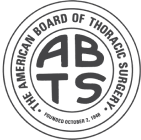















Mazin Radwan, RVS, RPhS
Director of Chuback Vascular Imaging
Imagine being at the peak of your game—draining threes like Damian Lillard or blocking shots like Victor Wembanyama—only to be sidelined by something as quiet as a blood clot. Deep vein thrombosis (DVT), a disorder that doesn't care if you're a top athlete or a weekend warrior, is what we're discussing during DVT Awareness Month.
Proving that even the fittest among us are not immune, both Wembenyama and Lillard were shut down this season following a DVT diagnosis. What is DVT, why does it develop, and how can you safeguard yourself? Let's break it down simply—no medical jargon, just real talk.
Usually in the legs, but occasionally in the arms (like Wembanyama's shoulder), DVT is a blood clot forming in a deep vein. Untreated, it can break free and go to the lungs, hence generating a pulmonary embolism (PE), which is fatal. The frightening aspect? Often, it exhibits no clear signs until it is severe. Awareness is so crucial since anyone, not only NBA players, can acquire DVT—and anyone can benefit from proactive venous ultrasound screening.
Professional sportsmen are meant to be the image of health. Trainers, nutritionists, and team doctors help them stay in top shape. But here we are, two of the most prominent NBA stars out with blood clots.
Though their narratives are different, both are as significant. While the other emphasizes the risks of immobility, one illustrates how clots can result from repetitive action. Their combined efforts create a whole image of DVT hazards everyone should be aware of.
Victor Wembanyama's Shoulder Clot
When doctors discovered a clot in his right shoulder, the 7'5" Spurs rookie was ruling the league—leading in blocks and making his first All-Star appearance. Unlike usual leg DVTs, his was probably brought on by repeated overhead activity—think thousands of jump shots.
Damian Lillard's Calf Clot
In the interim, the Bucks' great Damian Lillard was out with what looked like a calf injury. It turned out to be DVT—a clot in his right calf. His age and regular travel due to game schedules raised his danger at 34.
Both instances emphasize one vital lesson: If anything seems wrong, get checked.
Before his diagnosis, Wembanyama said he had had weariness and "low energy" for weeks. At first, Lillard's calf discomfort was dismissed as a strain. The moral of the tale? Pay attention to your body and treat unusual swelling or fatigue as a signal to get evaluated.
One would assume peak physical condition equals no health concerns, although DVT defies conventional conventions.
Height Matters
People taller than Wembanyama have longer veins, which complicates blood flow. Research indicates that just height raises DVT risk.
Travel & Immobility
The Spurs traveled 37,852 miles this season—the most in the NBA. Long-distance travel reduces circulation and increases clot risk.
Repetitive Motion
Wembanyama's shoulder thrombosis was probably caused by thoracic outlet syndrome, a disease resulting from repeated overhead activities, including shooting.
Developing DVT does not require NBA stardom among the risk factors: Long vehicle rides or flights (ever had swollen ankles after travel?).
The encouraging news? Simple practices can help to reduce your risk.
A good offense is the best defense against DVT. Although we cannot remove all dangerous elements, everyone can take easy, sensible actions to safeguard themselves. These suggestions came from vascular doctors and sports medicine professionals who treat athletes and regular individuals. You could be surprised by how simple the tips are to follow daily.
Move Regularly: Keep Your Blood Flowing
Sitting for extended durations is like pausing your circulation. Make it a practice on flights to stand and stretch every hour—walk to the restroom, perform calf raises next to your seat, or just flex your feet. Set a timer at work to walk for two minutes every hour. Standing even helps during phone calls. NBA teams require movement breaks on lengthy flights; if it's good enough for LeBron and professionals, it's good enough for you.
Stay Hydrated: Your Blood's Best Friend
Dehydration slows your blood molasses, increasing clotting chances. Daily, aim for half your body weight in ounces (e.g., 75 oz for 150 lbs). Replace that third coffee with lemon-infused water or herbal tea. During games, players like Lillard hydrate with electrolyte combinations; coconut water is also acceptable. Classic indications of dehydration are dark urine and headaches.
Know Your Body: Be Your Health Detective
Wembanyama's "off" feeling saved his life. Monitor uncommon symptoms: ongoing swelling, one limb's warmth, or abnormal weariness. Record changes as though you were tracking a strange noise in an automobile. While males push through, doctors say women frequently brush off leg discomfort as "just cramps." Remember that occasionally, clots resemble muscular injuries (like Lillard's misdiagnosed calf). Get examined if you're unsure. According to Warriors' trainer Rick Celebrini, "Athletes are awful patients. The rest of us ought to be more intelligent.
Compression Socks: The Secret Weapon
These aren't your grandfather's beige stockings. NBA locker rooms are stocked with modern compression socks (15-20 mmHg pressure). Pushing blood upward, they function like soft squeegees. For long journeys, many swear by them; Draymond Green even sports them on the bench. Look for textiles that wick moisture; steer clear of inexpensive drugstore alternatives.
Wembanyama's clot was found before it got to his lungs. Lillard's therapy calmed his rapidly. Modern treatment can control DVTs—if you act quickly. Recurring pulmonary clots cut short Chris Bosh's career at age 31. On the other hand, Brandon Ingram came back stronger following his 2019 shoulder surgery. The difference is awareness and timing.
DVT doesn't care if you're an NBA star or the average person. It's a quiet danger that calls for focus. Wembanyama and Lillard's narratives teach us to pay attention to our bodies, to exercise frequently, and to heed warning signals. Spread the word this DVT Awareness Month and take action if something feels off.
Our New Jersey vascular specialists offer fast access to venous ultrasounds and personalized treatment plans. Schedule a consultation today so your vein health stays protected year-round.
Mazin Radwan, RVS, RPhS
Director of Chuback Vascular Imaging
We invite you to become a part of the Chuback Vein Center family. We are confident in our ability to restore your health and wellness.